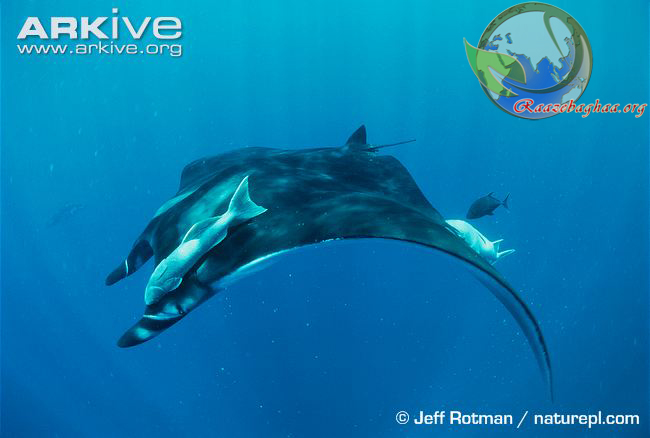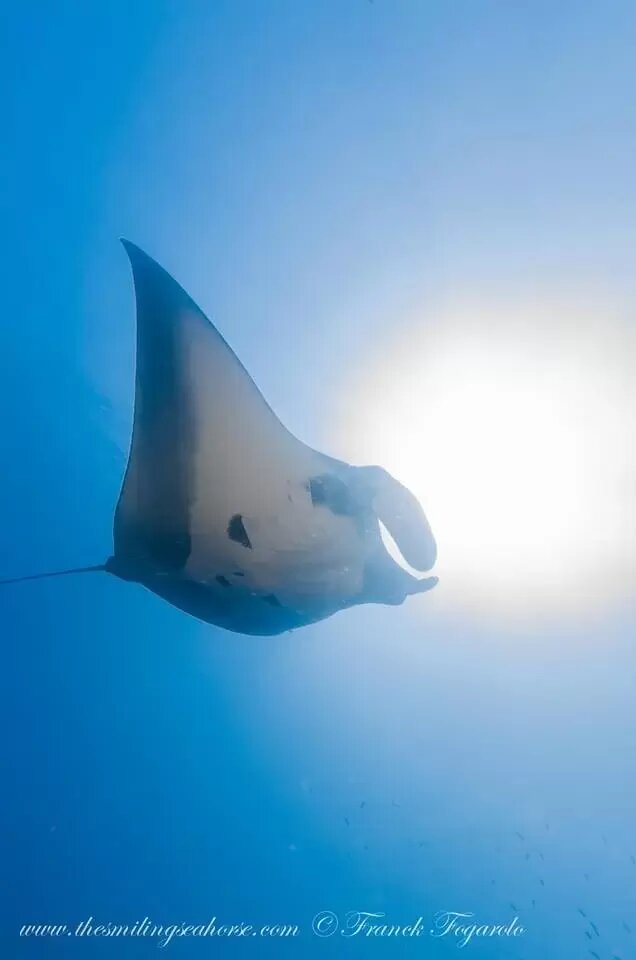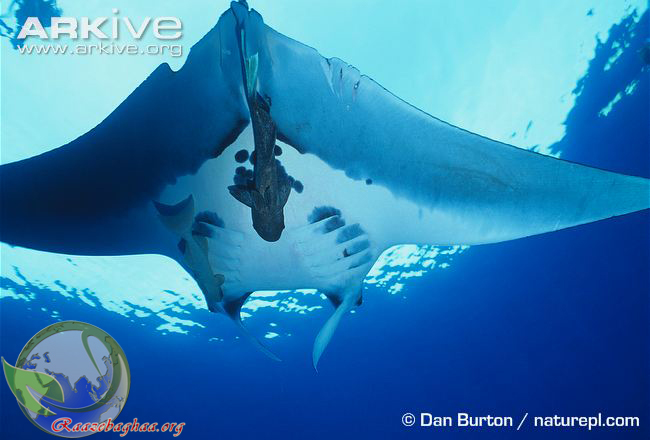

There’s evidence that they rarely reach depths of over 1,000 metres. They are most often found in shallow waters at depths of 1 to 40 metres near coastlines or coral reefs that are rich in food, but they have also been seen at depths of over 120 metres. Occasionally, giant oceanic manta rays invade shallow bays and estuaries. They live mostly near continents and islands, such as the coast of South Africa, around Madagascar, between the coasts of southern California and northern Peru, from the coast of North Carolina in the US to the south of Brazil, anywhere in the Gulf of Mexico, but can also be seen offshore. Giant oceanic manta rays occur in the tropical seas and oceans of the world from 35 degrees north latitude to 35 degrees south latitude. The rear of the body has a long thorn-shaped tail without a sharp needle at the end. There are also dark spots on the body that are different for each specimen. The ray’s belly is of milky white colour that acts as a disguise when viewed from below.

The fins are remarkably elastic on both sides, allowing a maximum grip. The giant oceanic manta rays swim by moving their two fins, resembling a flying bird. The head is at the front of the body with a pair of eyes that can observe single objects independently of the other eye behind the cheeks. The giant oceanic manta ray’s body has a hydrodynamic shape that reduces water resistance to movement. There are only minor differences between the sexes. Large specimens live for about 20 to 25 years, although the maximum life span is not yet known. The maximum registered weight is 1,400 kg. Thus, giant oceanic manta rays are broad rather than long. They grow to about 3 to 5 metres in length, with a disc size of about 7 metres, but specimens with a range of more than 9 metres have been observed.

Giant oceanic manta rays, like sharks, do not have a solid skeleton but bones consisting of flexible cartilage.


 0 kommentar(er)
0 kommentar(er)
